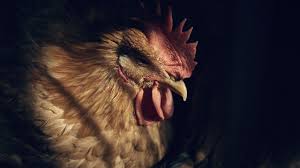The USA poultry industry is facing a crisis due to the ongoing spread of bird flu, which has led to the mass culling of millions of chickens. This widespread loss is driving egg prices to record highs, averaging nearly $6 per dozen. One possible solution? Vaccines. However, their implementation has been delayed due to concerns over potential trade restrictions.
USDA’s $100 Million Investment in Bird Flu Vaccines
In response to the crisis, the U.S. Department of Agriculture (USDA) has announced a $100 million investment to study bird flu vaccines. This initiative is part of a larger $1 billion effort aimed at strengthening biosecurity measures on farms. The ultimate goal? To curb the spread of the virus while minimizing the economic impact on poultry farmers.
Resistance from the Meat Chicken Industry
While egg and turkey producers support vaccination efforts, meat chicken (broiler) producers are hesitant. Their main concern is the potential impact on exports, which totaled $4.7 billion last year. Many trading partners fear that vaccinated birds could carry undetectable infections, leading to stricter import restrictions.
Why is a Vaccine Necessary?
Since 2022, more than 166 million birds in the U.S. have been culled due to bird flu infections. The majority of these were egg-laying hens, leading to severe supply shortages and skyrocketing egg prices. Without a vaccination program, the government’s current policy of mass culling will continue, exacerbating the problem.
Veterinary experts argue that the resistance to vaccines is largely political, with the government reluctant to act due to pressure from the broiler industry. However, as egg prices reach alarming levels—hitting as high as $8–$9 per dozen in some regions—the need for a solution is becoming urgent.
Challenges in Implementing Vaccination
Before widespread vaccination can occur, the USDA must establish an effective monitoring system to detect outbreaks in vaccinated flocks. There are also concerns that the virus could mutate if it persists undetected, potentially posing a greater threat to human health.
Another challenge is the method of administration. Egg farmers prefer vaccines to be delivered via feed or water, as manually vaccinating millions of birds is impractical. However, ensuring effectiveness while maintaining trade partnerships remains a key hurdle.
Lessons from Other Countries
Countries like China and Mexico have been vaccinating poultry for years, but their approaches differ. Mexico does not cull infected flocks, allowing the virus to persist, whereas China vaccinates but also continues culling, helping to contain the spread. The U.S. may need to adopt a similar hybrid approach to balance disease control with trade concerns.
Will Vaccines Lower Egg Prices?
Even if vaccines are approved, price relief won’t be immediate. It takes 20 weeks for newly hatched chicks to begin laying eggs, meaning recovery will take time. The USDA predicts that average egg prices will remain about 41% higher than the 2024 average of $3.17 per dozen, potentially settling around $4.47 per dozen—still above normal levels.
For now, poultry farmers and consumers alike must brace for continued volatility in egg prices. Whether vaccines will be the long-term solution remains to be seen, but one thing is clear: the industry needs an effective plan to combat bird flu without compromising economic stability.
Download Eggora Poultry App: https://www.eggora.com/download-app
